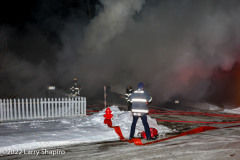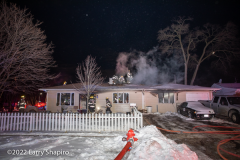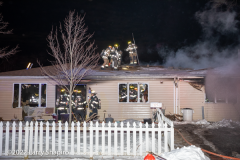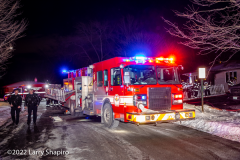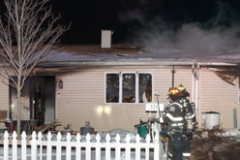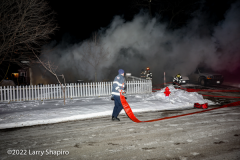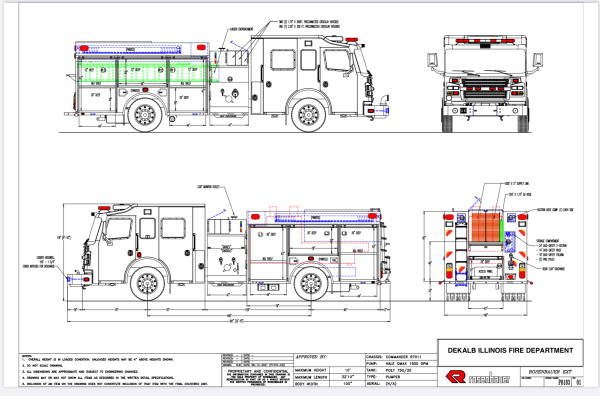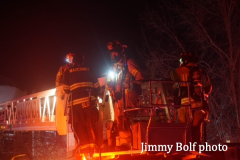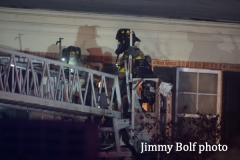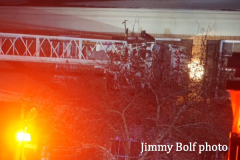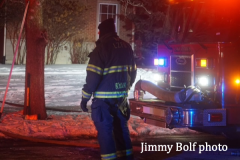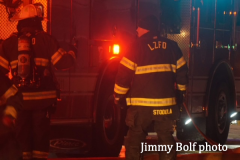This from Larry Shapiro:
Wheeling and Prospect Heights firefighters were dispatched to a reported house fire last night (2/5/22) at 8:15 p.m. RED Center upgraded the alarm to a Working Fire prior to the arrival of fire units after receiving multiple calls about a fire at 326 Renee Terrace. At the time of this fire, Wheeling Engine 42 was covering part of Lake Zurich due to a Box Alarm there. They responded to the fire in Wheeling from Lake Zurich.
Wheeling Ambulance 23 was first on the scene reporting heavy smoke and visible flames. All occupants were out of the house. There was a hydrant directly in front of the house with access partially blocked by excess snow near the driveway. Firefighters made entry through the front and darkened the visible flames in short order. Heavy smoke persisted for several minutes as they extinguished the rest of the fire.
Companies on the scene included all Wheeling units, Prospect Heights Engine 39 and Battalion 9, Buffalo Grove engine 26, Mount Prospect Engine 14, Niles Truck 2, North Maine Engine 1 and Battalion 1, Des Plaines Truck 61, and Arlington Heights Ambulance 2 who transported one resident to the hospital.
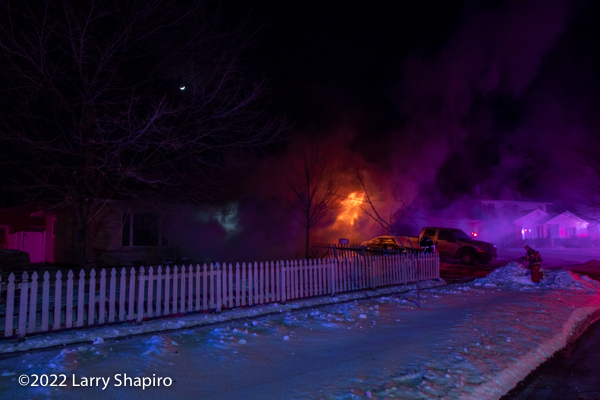
Larry Shapiro photo
